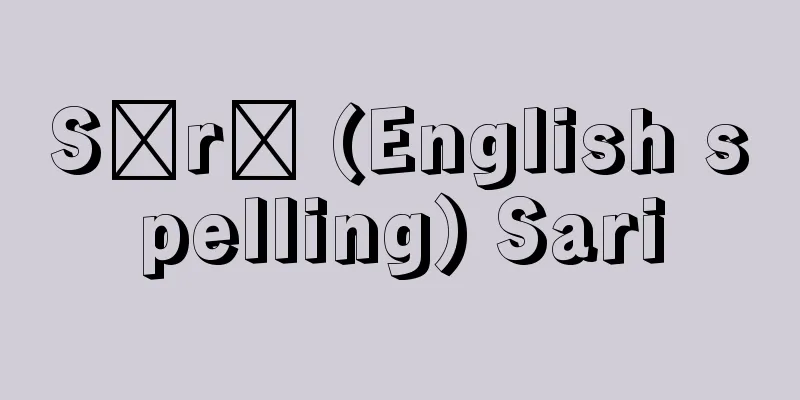Nemerteans - String-shaped animals

|
In animal classification, this group of animals is part of the phylum Nemertinea. They are called nemerteans, and are roughly intermediate between flatworms and mollusks in terms of phylogenetics, and are closer to flatworms. Most of them are marine and coastal. They are generally divided into tropical and polar species, with a few species distributed widely in the Northern Hemisphere or along the equator. Many species live in cold seas, with about 1,000 species known worldwide and about 100 reported from Japan. Their bodies are long and string-like, soft and highly elastic. They are generally cylindrical and slightly flattened dorsally and ventrally. Their main characteristic is that they are bilaterally symmetrical animals with no so-called body cavity in their bodies, and their snouts are located inside a tubular nasal cavity above the digestive tract, allowing them to move freely in and out of the body. In addition, they are the first lower invertebrates to have a closed vascular system and an anus in their digestive tract. The body color has a certain color pattern depending on the species, and depending on the species, it is beautiful. There are also species with a wide variety of body colors. The length can range from a few millimeters to several meters depending on the species, but is usually around a few centimeters to 30 centimeters. The mouth is located at the tip of the head or on the ventral side, and continues to the intestines via the esophagus and stomach. There are lateral blood vessels on the left and right sides of the body, and a dorsal blood vessel between the digestive tract and the proboscis, which connect the front and back of the body. The excretory organ is the proto-nephros, which ends in a ciliated flame cell. A pair of lateral nerves extend from the brain in the head to the rear, and the head sensilla, which are sensory organs, are located next to the brain. They move by contracting cilia on the surface of the body and muscles in the body wall. The snout has a unique proboscis apparatus. [Fumio Iwata] [Reference] |Source: Shogakukan Encyclopedia Nipponica About Encyclopedia Nipponica Information | Legend |
|
動物分類上、一門Nemertineaを構成する動物群。ヒモムシとよばれ、系統上、大ざっぱにいって扁形(へんけい)動物と軟体動物の中間に位置しており、どちらかといえば扁形動物に近い。ほとんどのものは海生で、沿岸性である。一般に熱帯性と寒帯性に分けられ、少数種は北半球または赤道に沿って広く分布する。寒海に種類が多く、世界で約1000種知られ、日本からは約100種が報告されている。体は細長い紐状で、柔らかくて伸縮性に富む。一般に円筒状で背腹にやや平たい。体中にいわゆる体腔(たいこう)がない左右相称動物であることが大きな特徴で、吻(ふん)は消化管の上にある管状の吻腔(ふんこう)の中にあり、自由に体外に出入させることができる。そのほか、下等無脊椎(せきつい)動物として初めて閉鎖型の血管系をもち、また消化管に肛門(こうもん)がある。体色は種により一定の色模様があり、種によって美麗である。また体色が変化に富む種がいる。長さは種によって数ミリメートルから数メートルに達するものがあり、普通は数センチメートルから30センチメートルほどである。口は頭部の先端または腹側にあり、食道、胃を経て腸に続く。血管は体の左右の側血管と、消化管と吻器官の間にある1本の背血管とがあり、体の前後でつながっている。排出器官は原腎管(げんじんかん)で、末端は繊毛のある、焔細胞(ほのおさいぼう)になっている。頭部の脳からは後方に1対の側神経が出ており、脳に接して感覚器官である頭感器がある。体表にある繊毛と体壁の筋肉の収縮で移動する。吻には特有な吻装置がある。 [岩田文男] [参照項目] |出典 小学館 日本大百科全書(ニッポニカ)日本大百科全書(ニッポニカ)について 情報 | 凡例 |
Recommend
Kamikuishiki [village] - Kamikuishiki
A village in Nishiyatsushiro County, southern Yama...
Akamatsu Renjo Castle
A Jodo Shinshu Honganji sect priest in the Meiji ...
Menaquinone-7 (English name)
… Vitamin K1 was isolated from alfalfa and is als...
Chrodegang (English spelling)
715‐766 Bishop and saint in the Frankish period. A...
Tonio Kröger
A short story by Thomas Mann published in 1903. It...
Tachibana (Orange) - Tachibana
An evergreen tree of the Rutaceae family, this sma...
Kisoushin - Kisoushin
…Not only were commoners not allowed to join this...
cena
... The ground floor of the insula was either ren...
Bergenia cordifolia (English spelling) Bergenia cordifolia
… [Munemin Yanagi]. … *Some of the terms mentione...
Integration (English)
"The meaning of integration" 1. In educa...
Culex
...A general term for insects belonging to the Cu...
Mueller, O. (English spelling) MuellerO
…However, they did not form a stylistic school or...
Rozwi
…There has long been fierce debate about the date...
Vesperbild
...This is one of the so-called "Andachtsbil...
Ruiyou peony - Ruiyou peony
Its leaves resemble those of the peony, hence the ...









